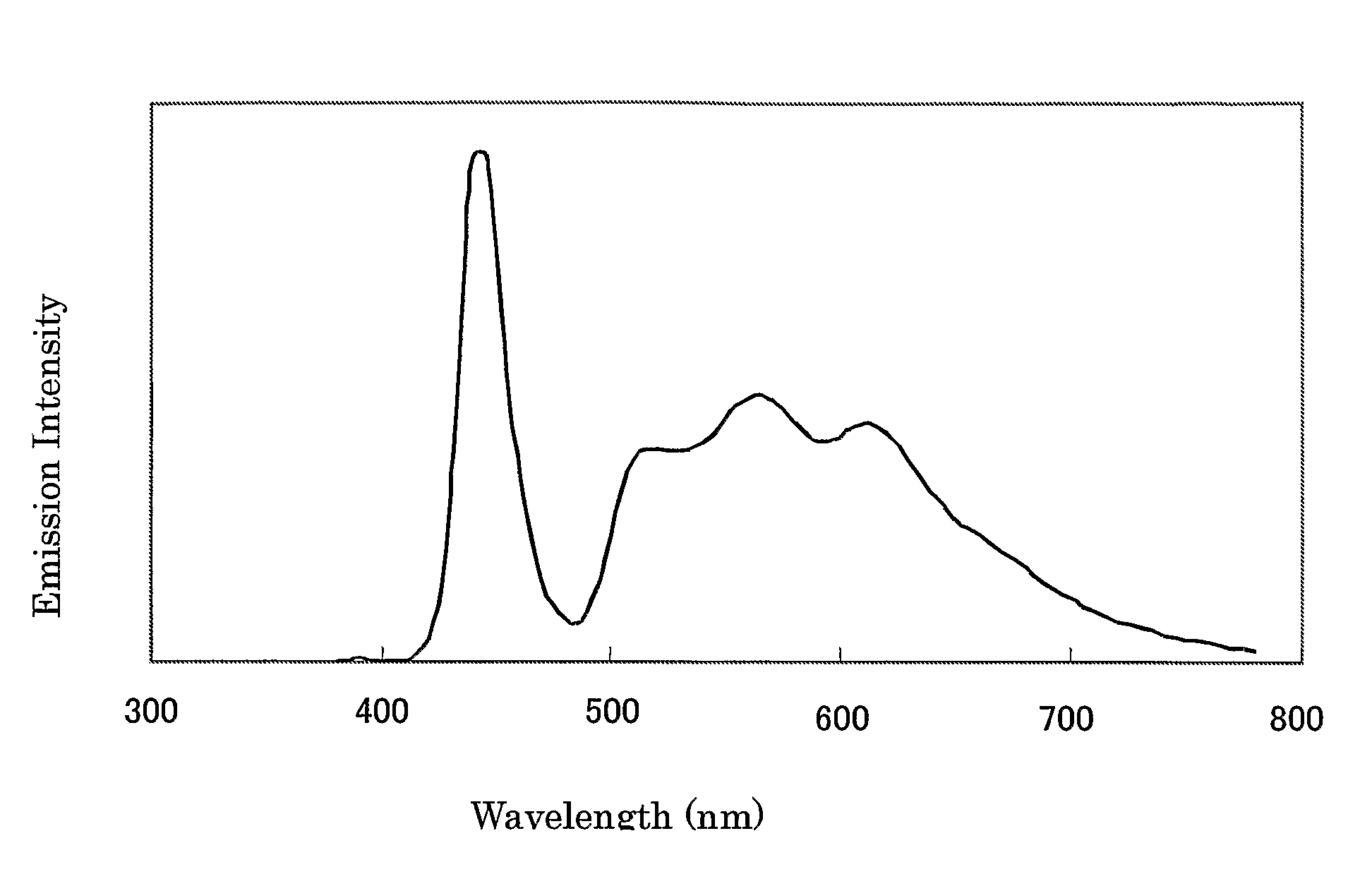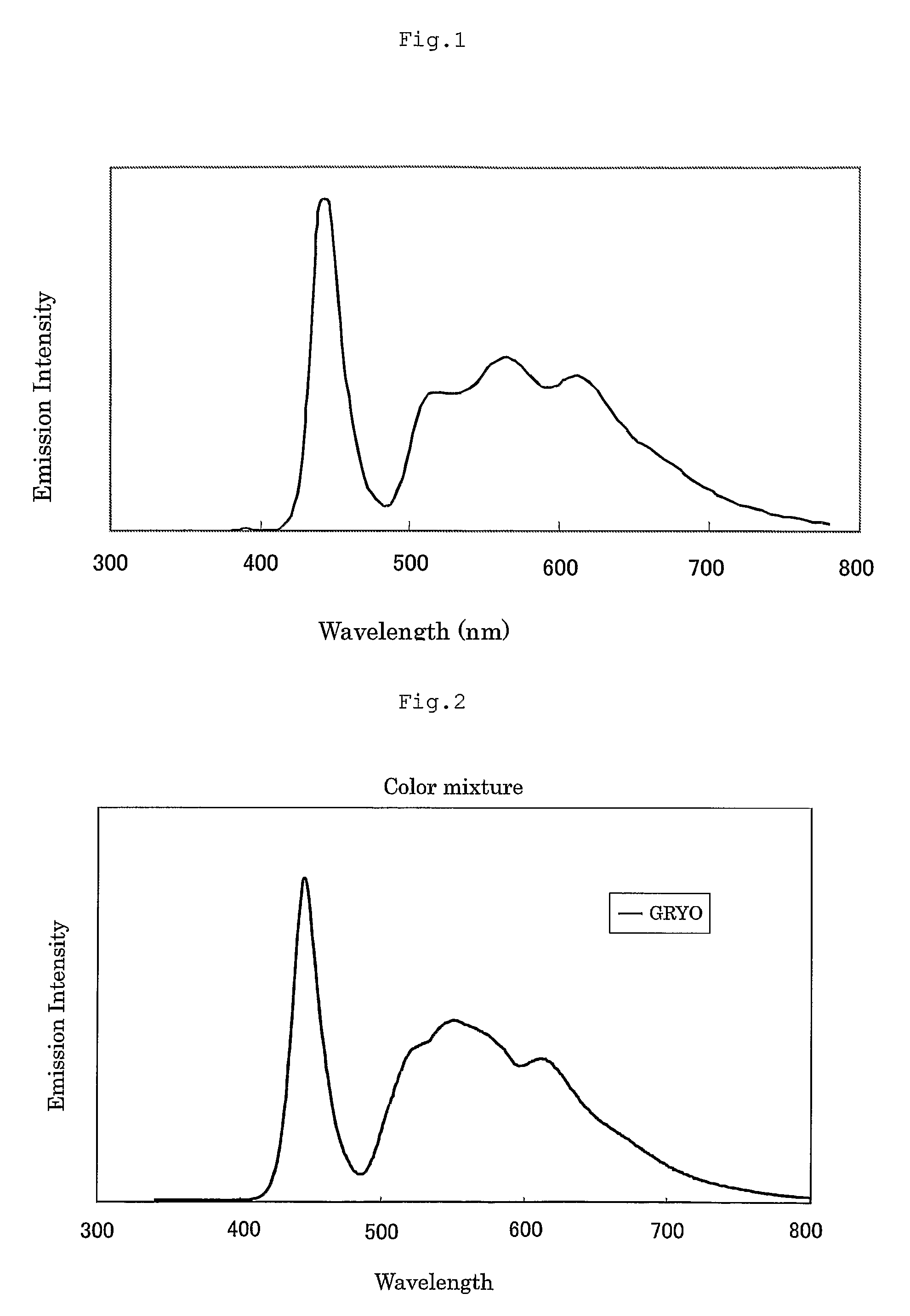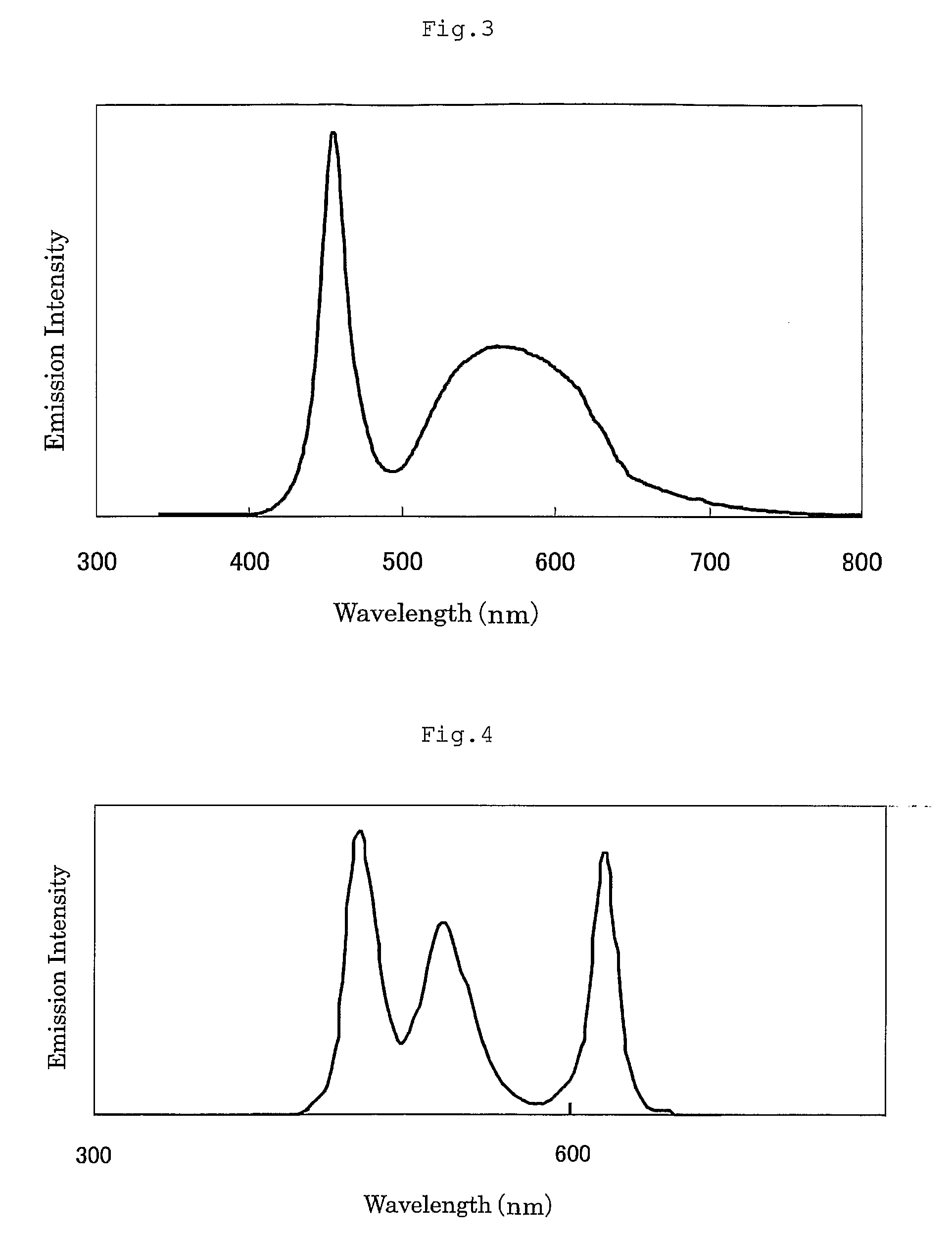Light-Emitting Diode Illumination Source
a technology of light-emitting diodes and illumination sources, which is applied in the field of illumination sources, can solve the problems of not having flat spectral distributions of conventional led light sources, not including sufficient components for all wavelengths, and difficult for such a light source to show colors with wavelengths corresponding to valleys when used for illumination, and difficult for the light source to show red particularly
- Summary
- Abstract
- Description
- Claims
- Application Information
AI Technical Summary
Benefits of technology
Problems solved by technology
Method used
Image
Examples
example 1
[0040] An InGaN light emitting diode chip having a dominant emission wavelength of 455 nm and an emission output of 4.6 mW was mounted in a surface mount package of 3 mm×2.5 mm×2.5 mm in outer size. Then, 4.9 mg of the iridium complex (E2), 0.4 mg of (E17), and 1.7 mg of (E16) were dispersed in 10 g of an epoxy resin (refractive index 1.6, EL438 available from Sanyu Rec Co. Ltd.), poured into a concavity of the surface mount package, and heat-treated at 120° C. for 4 hours to cure the resin, whereby a photoluminescent layer was formed.
[0041] The obtained LED light source was energized at 3.27 V and 20 mA and lighted. The emission spectrum thereof is shown in FIG. 1. There were three peaks in the wavelength region of 480 to 700 nm, and the maximum intensity was at 575 nm. There were two valleys between the peaks, and the minimum intensity was at 530 nm. The ratio of the intensities was 100:78. The emission intensity at 650 nm was 55% of the maximum intensity in the wavelength region...
example 2
[0044] An InGaN light emitting diode chip having a dominant emission wavelength of 455 nm and an emission output of 4.6 mW was mounted in a surface mount package of 3 mm×2.5 mm×2.5 mm in outer size. Then, 4.9 mg of the iridium complex (E2), 0.5 mg of (E17), 0.6 mg of (E14), and 1.0 mg of (E16) were dispersed in 10 g of an epoxy resin (refractive index 1.6, EL438 available from Sanyu Rec Co. Ltd.), charged into a concavity of the surface mount package, and heat-treated at 120° C. for 4 hours to cure the resin, whereby a photoluminescent layer was formed.
[0045] The obtained LED light source was energized at 3.27 V and 20 mA and lighted. The emission spectrum thereof is shown in FIG. 2. There were four peaks in the wavelength region of 480 to 700 nm, and the maximum intensity was at 553 nm. There were three valleys between the peaks, and the minimum intensity was at 597 nm. The ratio of the intensities was 100:75. The emission intensity at 650 nm was 51% of the maximum intensity in th...
PUM
 Login to View More
Login to View More Abstract
Description
Claims
Application Information
 Login to View More
Login to View More - R&D
- Intellectual Property
- Life Sciences
- Materials
- Tech Scout
- Unparalleled Data Quality
- Higher Quality Content
- 60% Fewer Hallucinations
Browse by: Latest US Patents, China's latest patents, Technical Efficacy Thesaurus, Application Domain, Technology Topic, Popular Technical Reports.
© 2025 PatSnap. All rights reserved.Legal|Privacy policy|Modern Slavery Act Transparency Statement|Sitemap|About US| Contact US: help@patsnap.com



